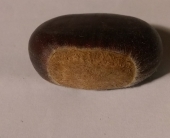
 10
10




The holy trinity of wholesomeness: Fred Rogers - be kind to others; Steve Irwin - be kind to animals; Bob Ross - be kind to yourself

 2
2




List of Bryant RedHawk's Epic Soil Series Threads We love visitors, that's why we live in a secluded cabin deep in the woods. "Buzzard's Roost (Asnikiye Heca) Farm." Promoting permaculture to save our planet.




The holy trinity of wholesomeness: Fred Rogers - be kind to others; Steve Irwin - be kind to animals; Bob Ross - be kind to yourself
 1
1




The holy trinity of wholesomeness: Fred Rogers - be kind to others; Steve Irwin - be kind to animals; Bob Ross - be kind to yourself












 2
2




List of Bryant RedHawk's Epic Soil Series Threads We love visitors, that's why we live in a secluded cabin deep in the woods. "Buzzard's Roost (Asnikiye Heca) Farm." Promoting permaculture to save our planet.




The holy trinity of wholesomeness: Fred Rogers - be kind to others; Steve Irwin - be kind to animals; Bob Ross - be kind to yourself
 1
1




 2
2




The holy trinity of wholesomeness: Fred Rogers - be kind to others; Steve Irwin - be kind to animals; Bob Ross - be kind to yourself

 1
1




Some places need to be wild
 1
1




I make a Maple Syrup instructional movie! Check it out HERE
SKIP books, get 'em while they're hot!!! Skills to Inherit Property
See me in a movie building a massive wood staircase:Low Tech Lab Movie




Mike Jay wrote:This year I tried out a cheap-ish fencing option and it's worked to keep the deer out of my food forest. I'm not sure if it would work for elk. Here's a link to my remesh fence without posts. They say deer won't jump two 4' fences that are 4' apart. Maybe elk won't jump two 5' fences that are 5' apart? With this design, the two "fences" can be as far apart as you want. The fence can weave around trees (and even be attached to them if you want). If the perimeter doesn't have corners I don't think it needs any posts.
Just a thought. Maybe it would last long enough to get your living fence plants established...
 1
1








Josh Garbo wrote:I use slash to make a brush pile "fence" (about 4' wide, 4' high) along 400 feet of property boundary for animal habitat, combined with four foot mesh wire fence and some shrubbery. Then I will also have an instant trellis for berries. If deer make it over that, I will just put up a 6-7' high wire between trees.
I'm hoping that strong fishing line strung at 2' and 6' heights between trees and T-bar posts will deter deer along other more open borders. So far I've done well nailing large staples into (deciduous) trees.
In my climate, most deciduous trees (like hawthorne, mulberry, hazel, hazelnut, or apple) can be coppiced and used for traditional English-style hedge-laying. That is my future project.














Josh Garbo wrote:In my situation, the deer can't really get a running start, so I'm not worried about them clearing the slash. In your case, maybe the slash would stop the deer from seeing into the property?










 2
2




Some places need to be wild




The holy trinity of wholesomeness: Fred Rogers - be kind to others; Steve Irwin - be kind to animals; Bob Ross - be kind to yourself






The holy trinity of wholesomeness: Fred Rogers - be kind to others; Steve Irwin - be kind to animals; Bob Ross - be kind to yourself
 1
1




A build too cool to miss:Mike's GreenhouseA great example:Joseph's Garden
All the soil info you'll ever need:
Redhawk's excellent soil-building series





 1
1




The holy trinity of wholesomeness: Fred Rogers - be kind to others; Steve Irwin - be kind to animals; Bob Ross - be kind to yourself
 1
1




A build too cool to miss:Mike's GreenhouseA great example:Joseph's Garden
All the soil info you'll ever need:
Redhawk's excellent soil-building series





 3
3




The holy trinity of wholesomeness: Fred Rogers - be kind to others; Steve Irwin - be kind to animals; Bob Ross - be kind to yourself
 1
1




Standing on the shoulders of giants. Giants with dirt under their nails
 1
1




https://www.youtube.com/user/callmeburton
https://www.facebook.com/projectanavita/
 1
1




 6
6




The holy trinity of wholesomeness: Fred Rogers - be kind to others; Steve Irwin - be kind to animals; Bob Ross - be kind to yourself
 2
2




I would be guessing the douglas fir are around 40 feet tall, maybe a little more, and were at 12-14" DBH.
John Daley Bendigo, Australia The Enemy of progress is the hope of a perfect plan
Benefits of rainfall collection https://permies.com/t/88043/benefits-rainfall-collection
GOOD DEBT/ BAD DEBT https://permies.com/t/179218/mortgages-good-debt-bad-debt
 3
3




John C Daley wrote:
I would be guessing the douglas fir are around 40 feet tall, maybe a little more, and were at 12-14" DBH.
What does this mean please?
The holy trinity of wholesomeness: Fred Rogers - be kind to others; Steve Irwin - be kind to animals; Bob Ross - be kind to yourself





|
Some people look down on tiny ads, but this tiny ad thinks tiny ads are the sexiest ads
Freaky Cheap Heat - 2 hour movie - HD streaming
https://permies.com/wiki/238453/Freaky-Cheap-Heat-hour-movie
|







